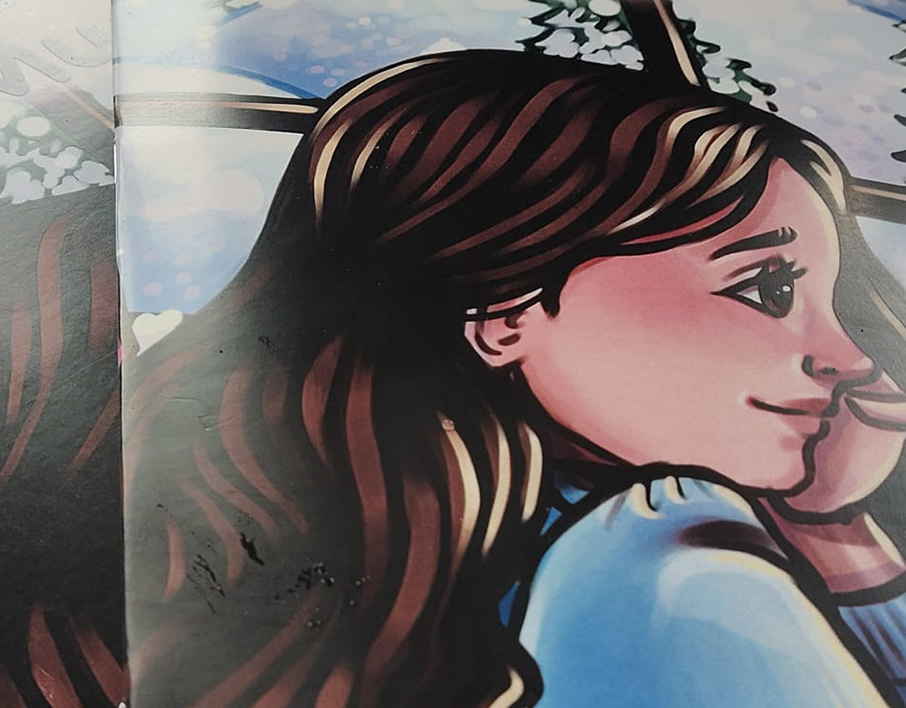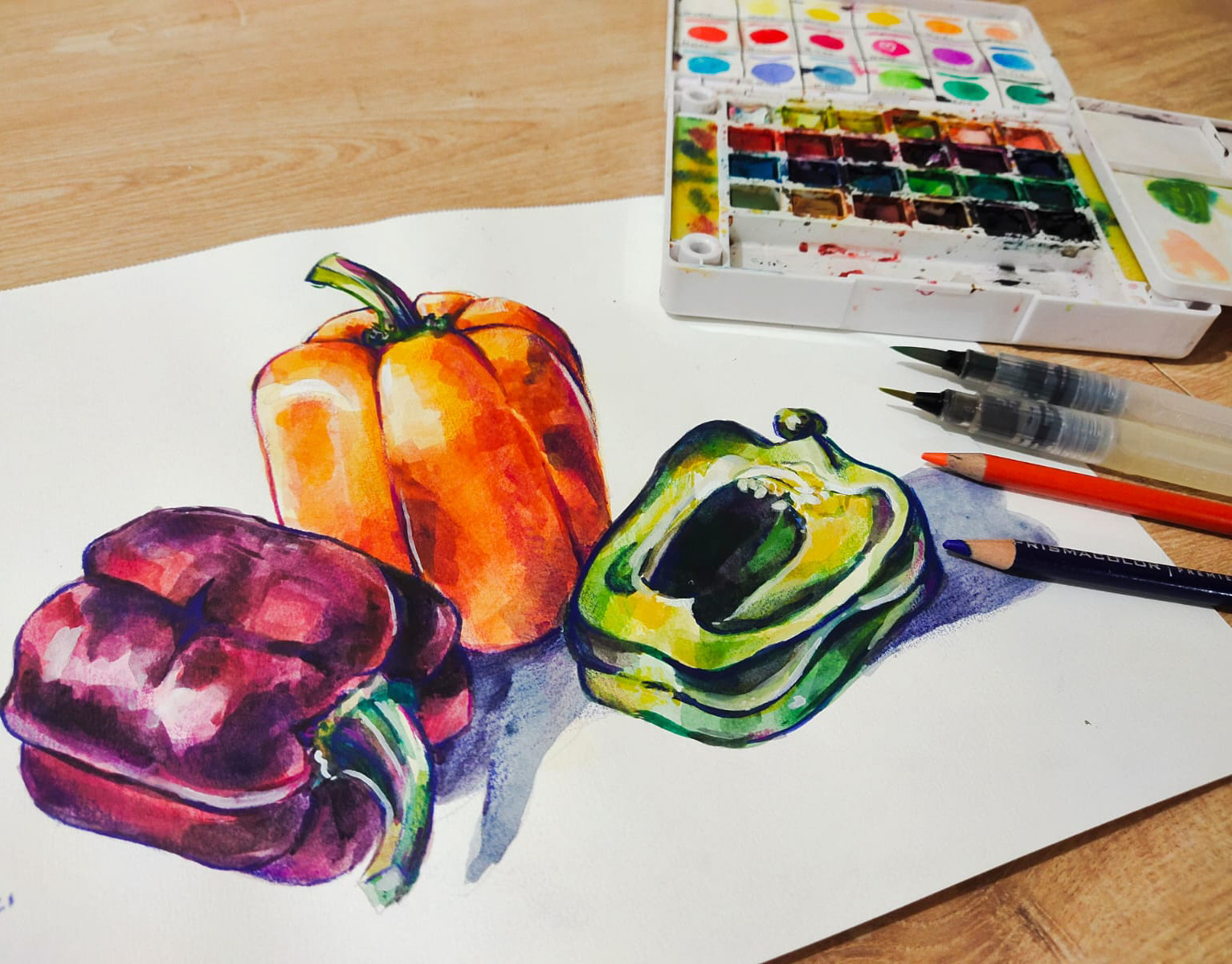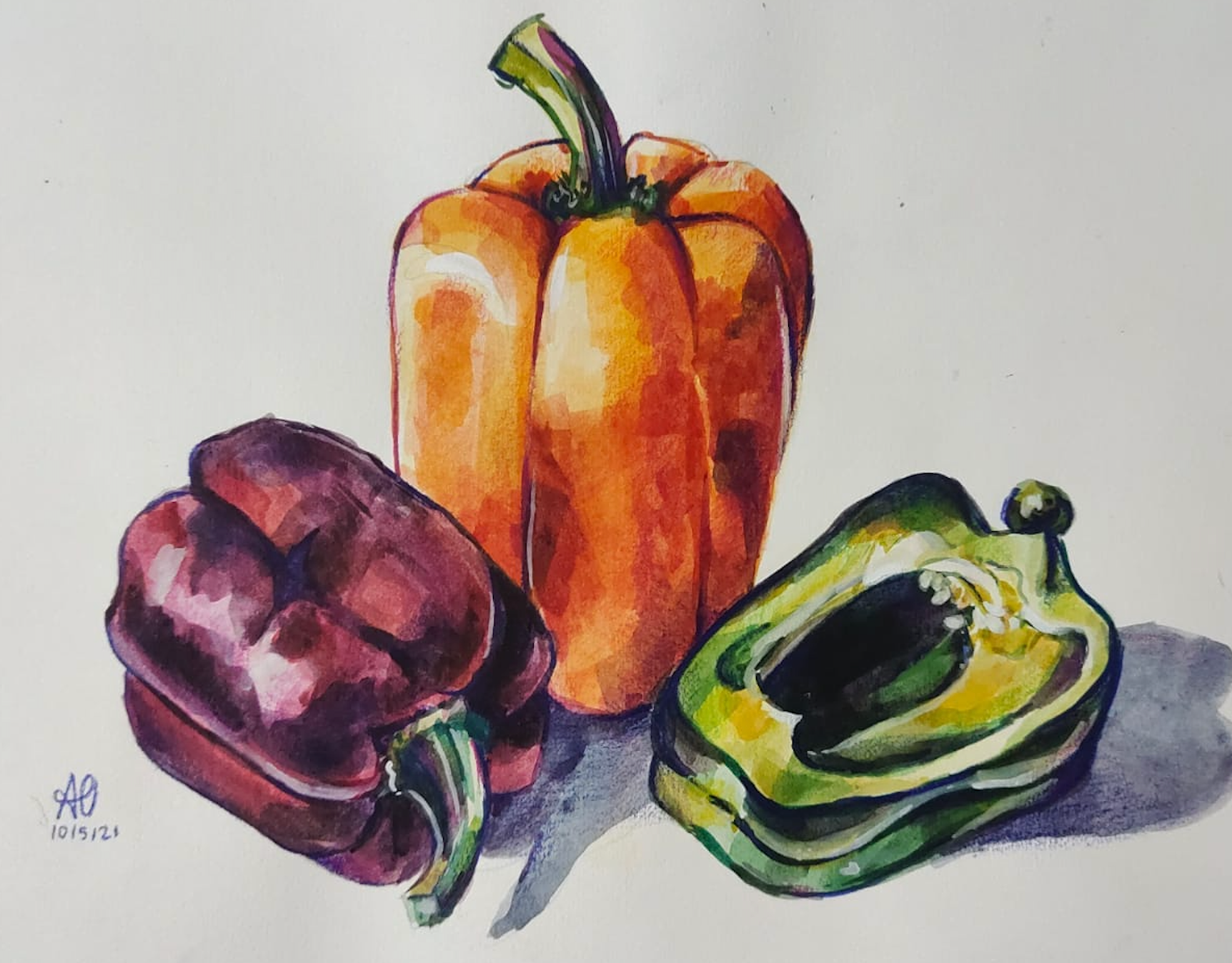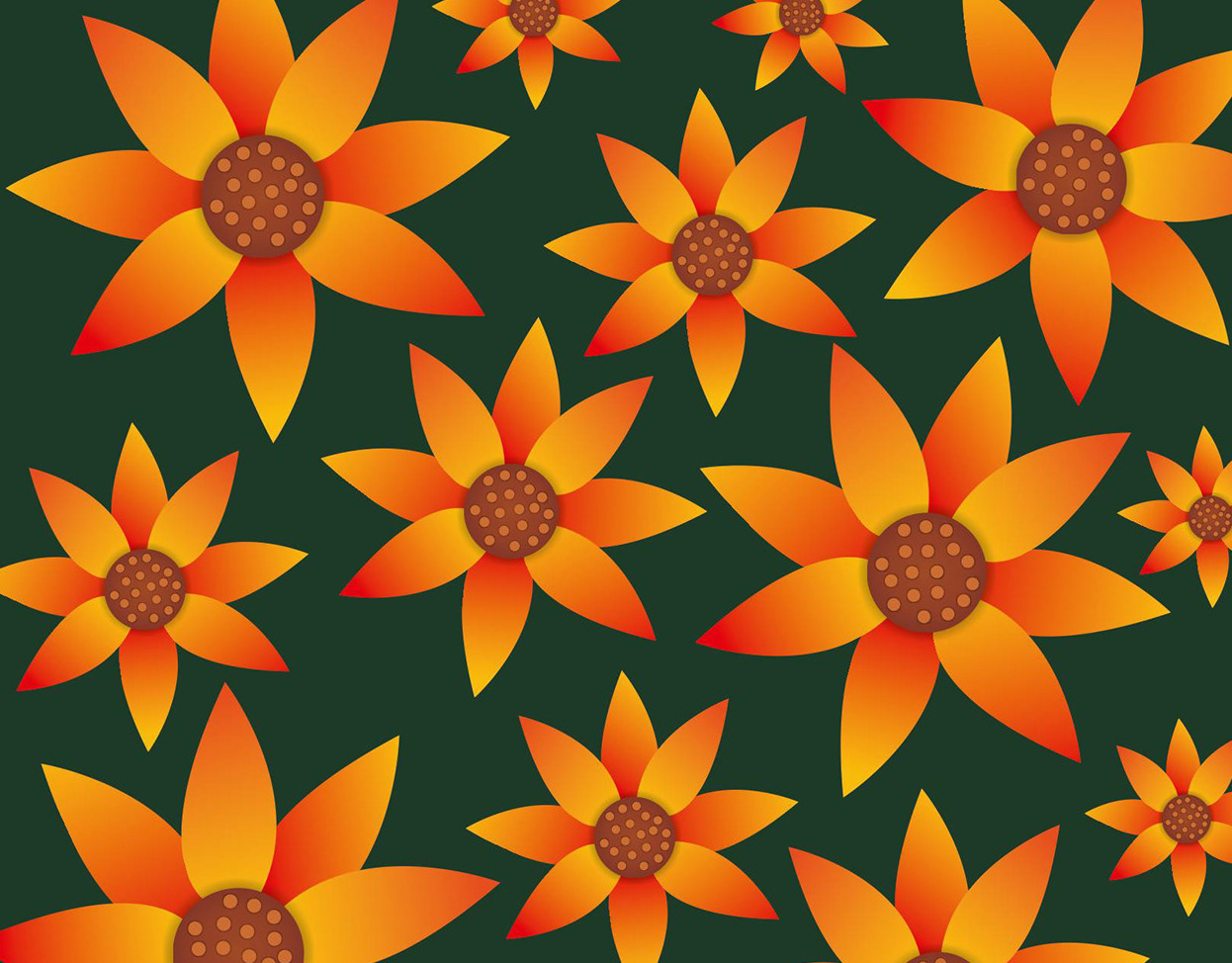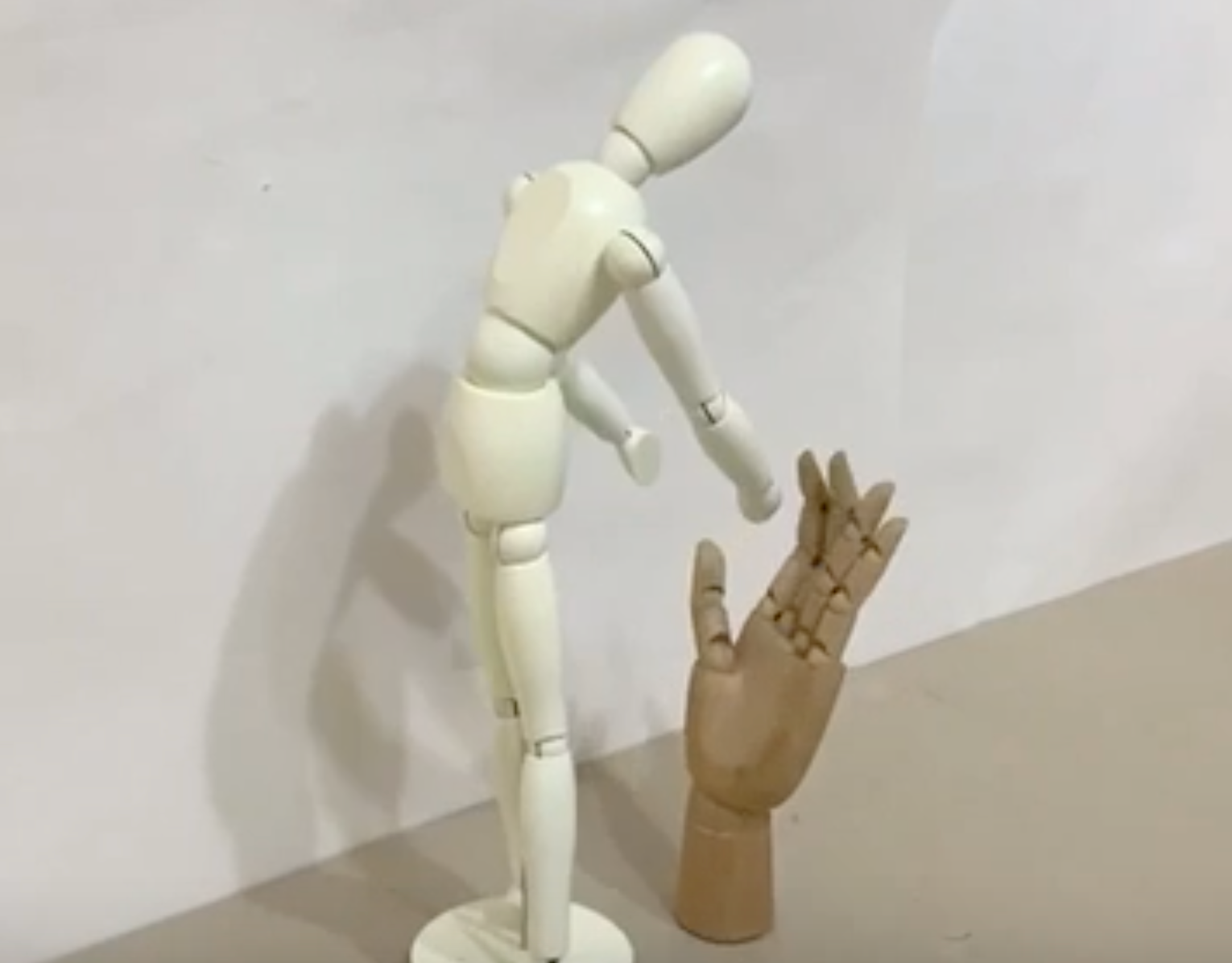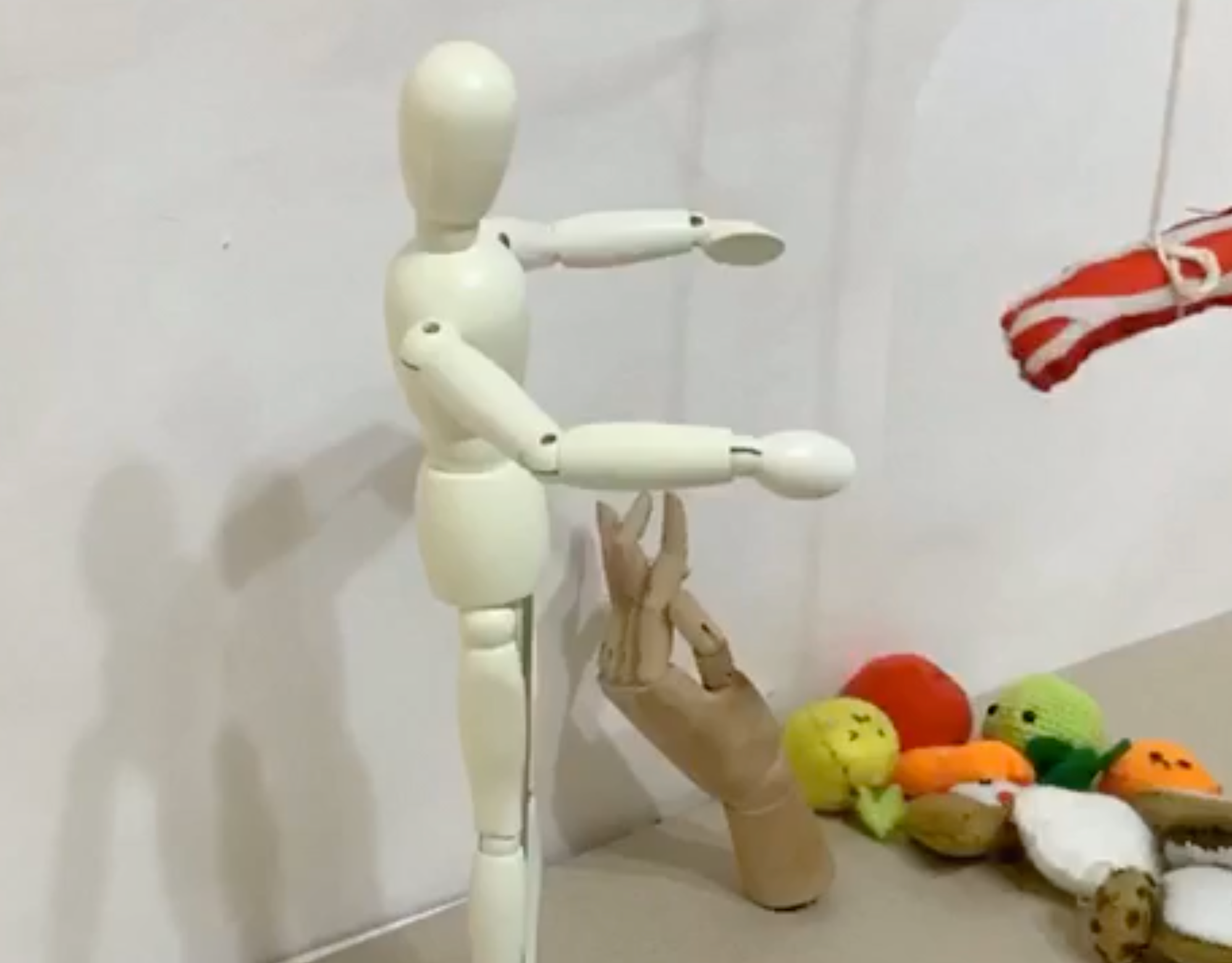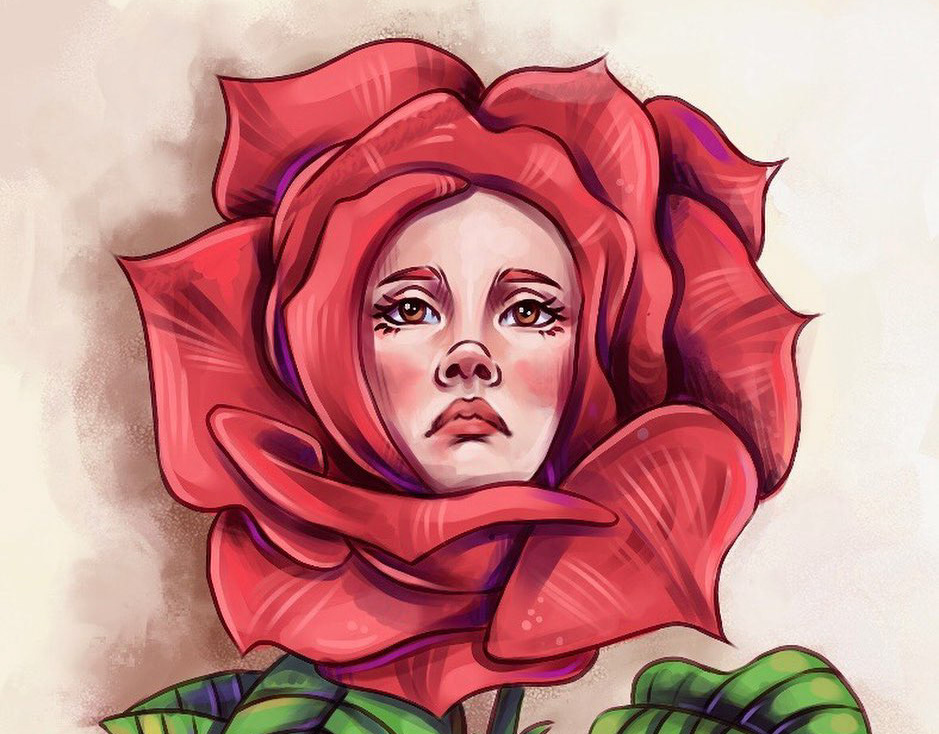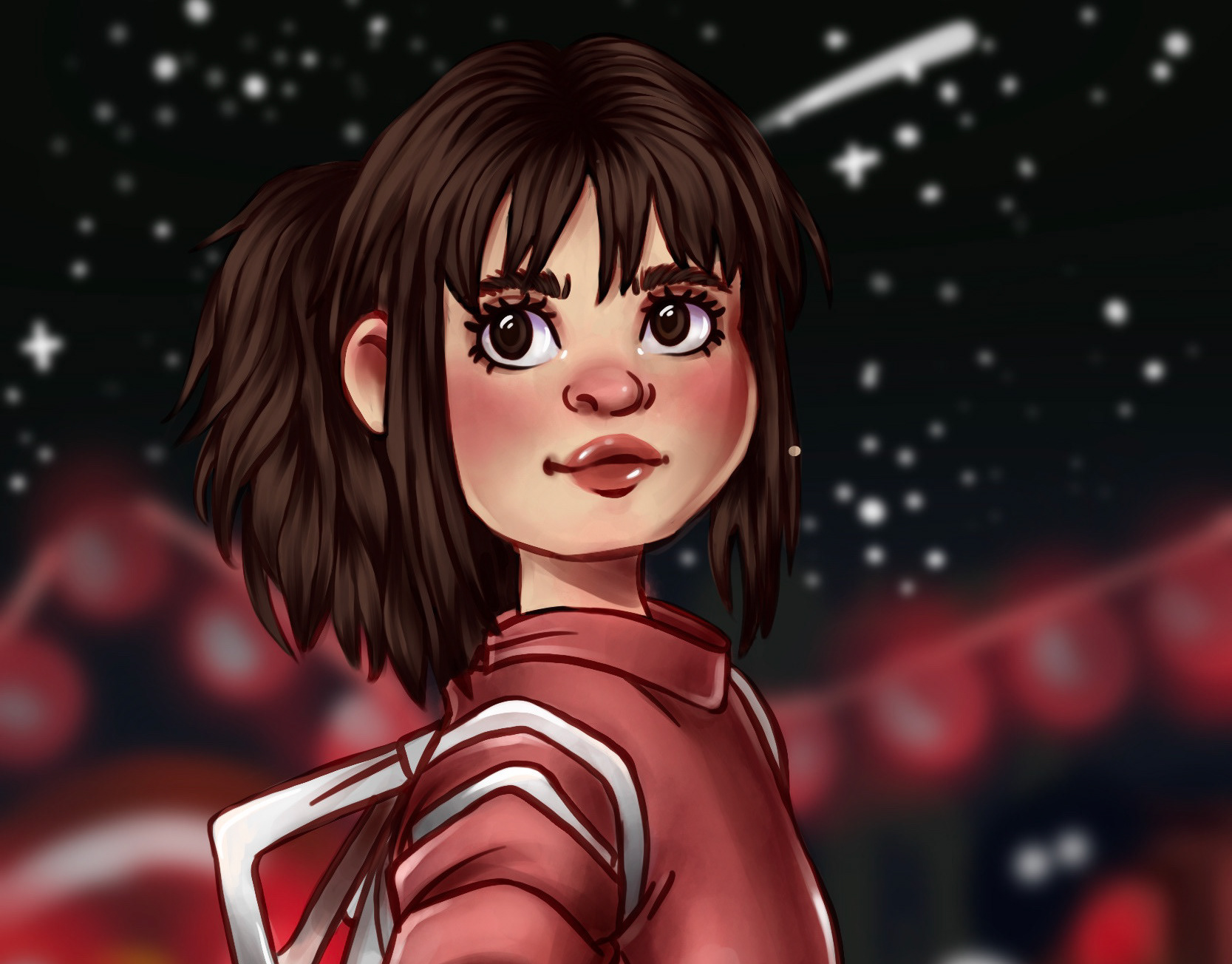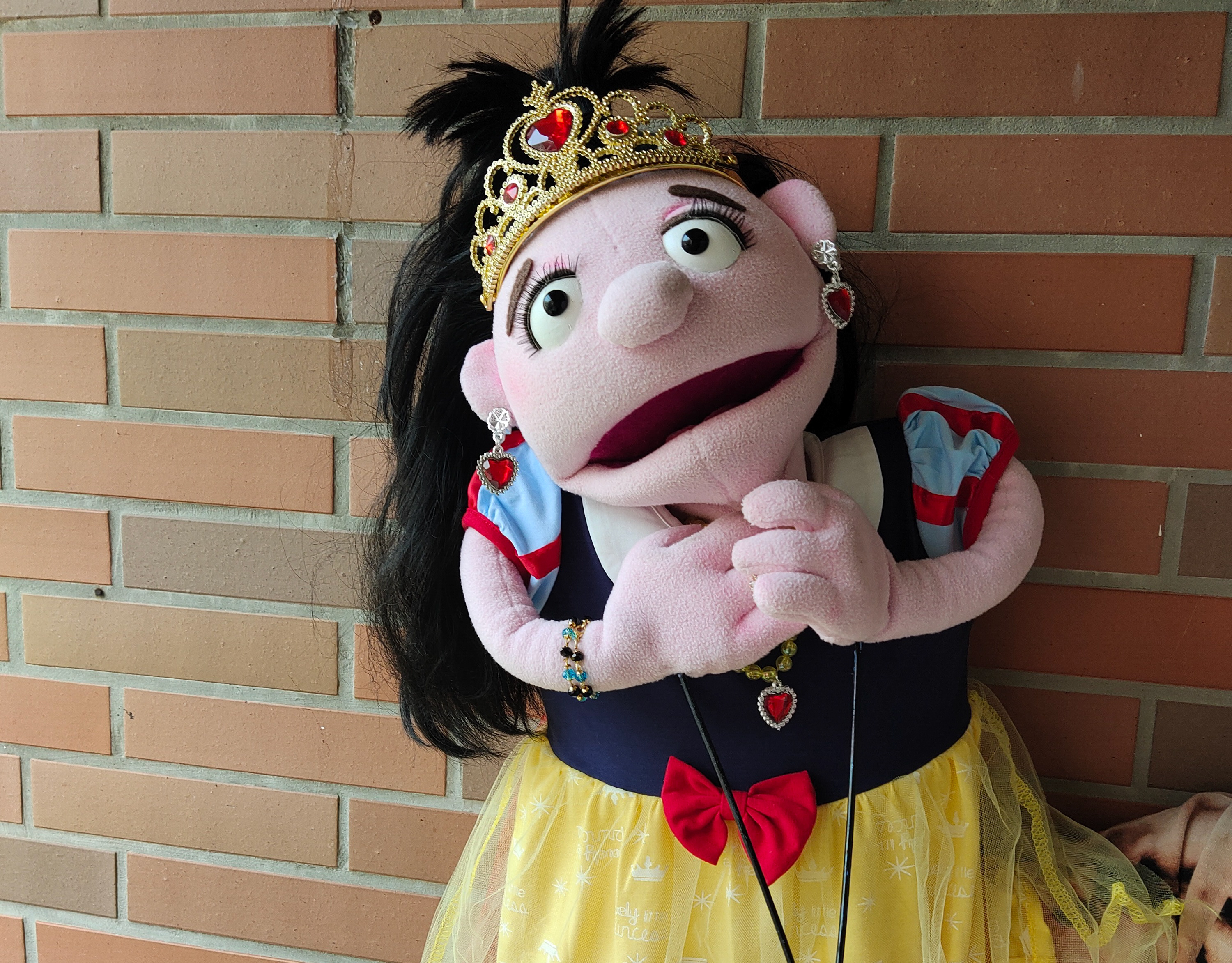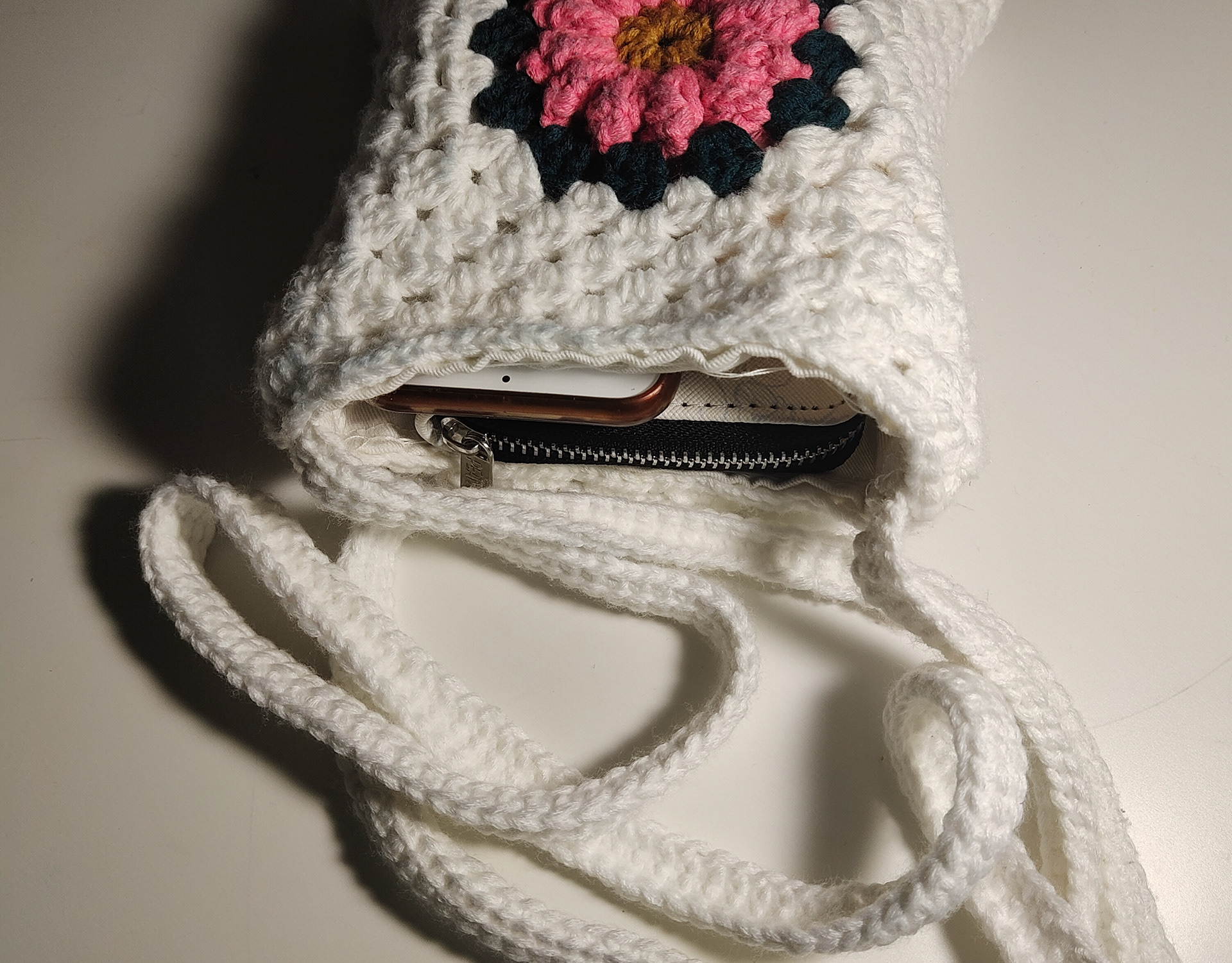Artwork #1: "Dream of Levni"
"Dream of Levni" is a tribute to women's empowerment inspired by the Ottoman Tulip Era. The piece recreates Levni's "Women in Attire" with enhancements to the background and adds a frame. I incorporated a backdrop of pink blossoms to introduce a touch of spring and a Munhani-style frame. Munhani is a motif featuring curves that is used in decorative arts. I created this work using traditional Tezhip (illumination) methods on a passe-partout paper. Visits to Topkapi Palace inspired me during my exploration of the Ottoman era. Visit anisaozalp.com/istanbul to see photos of my visit. The Tulip Era was a peaceful period during which the Empire began to orient itself outward. This era saw a growing elite interest in tulips. Levni was the last great master of miniature art and was celebrated for his realistic and innovative style.
#ArtisticExpression #OttomanInspiration #DigitalArt #TulipEra
PROCESS on passe-partout
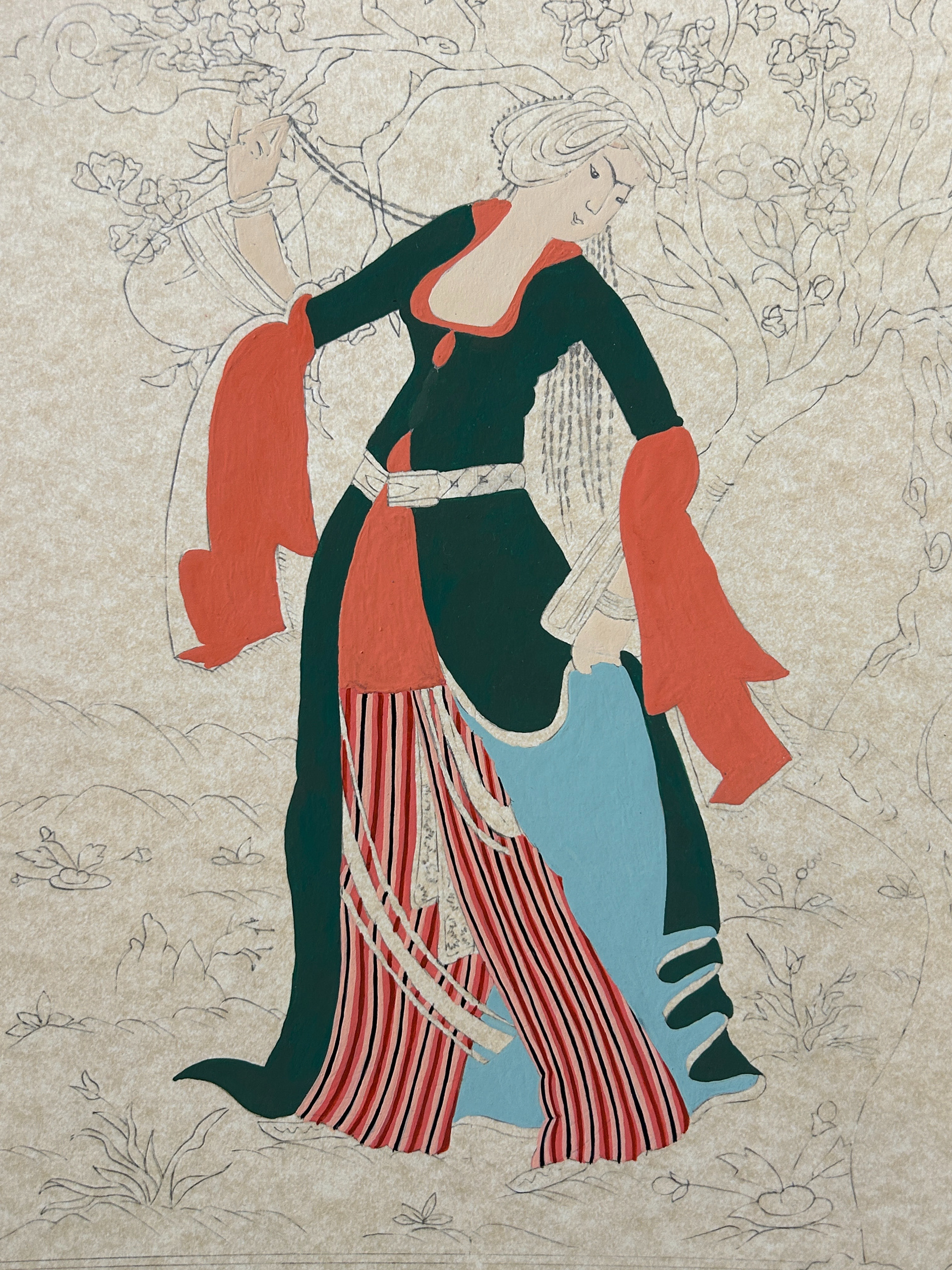

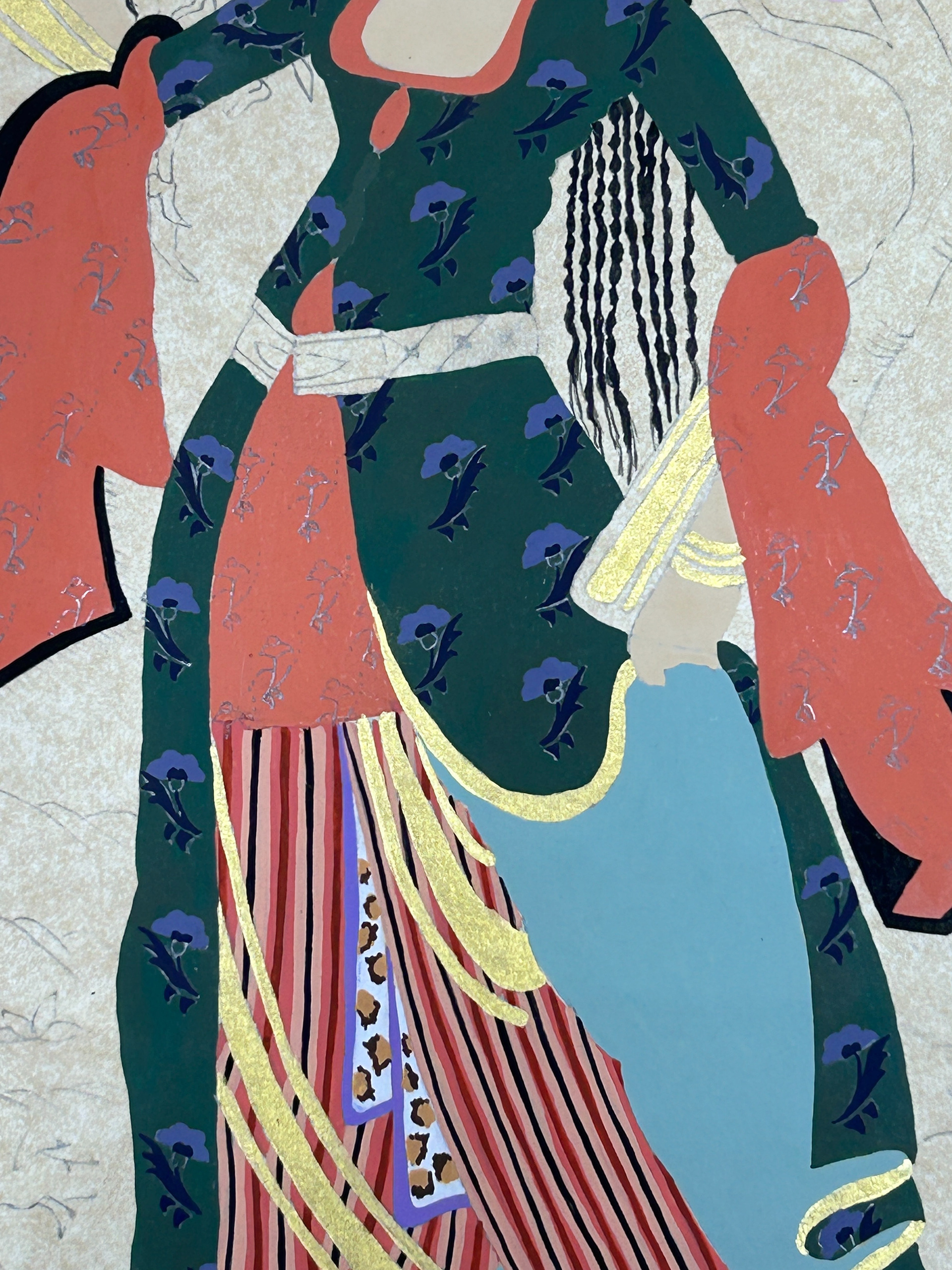
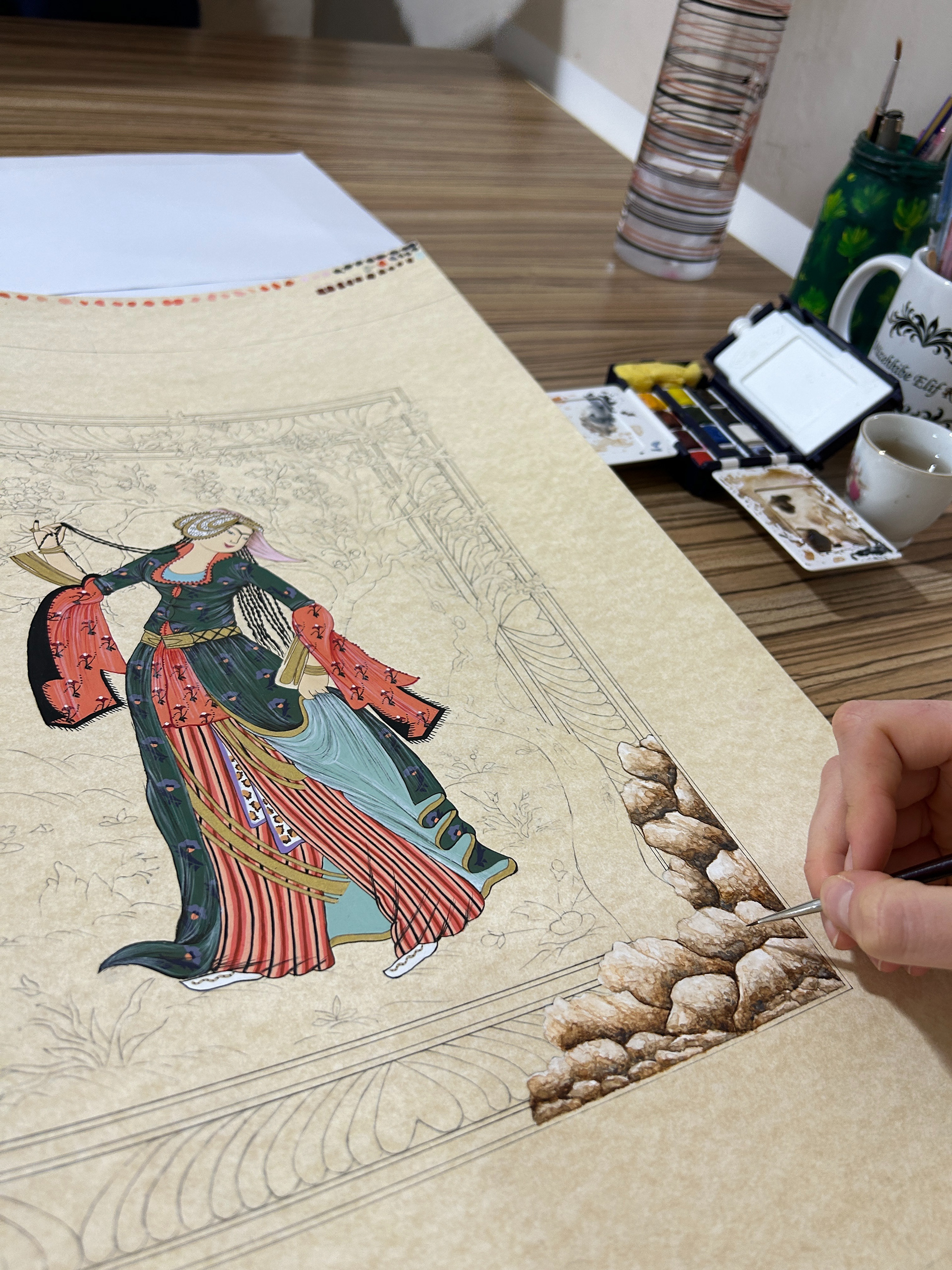
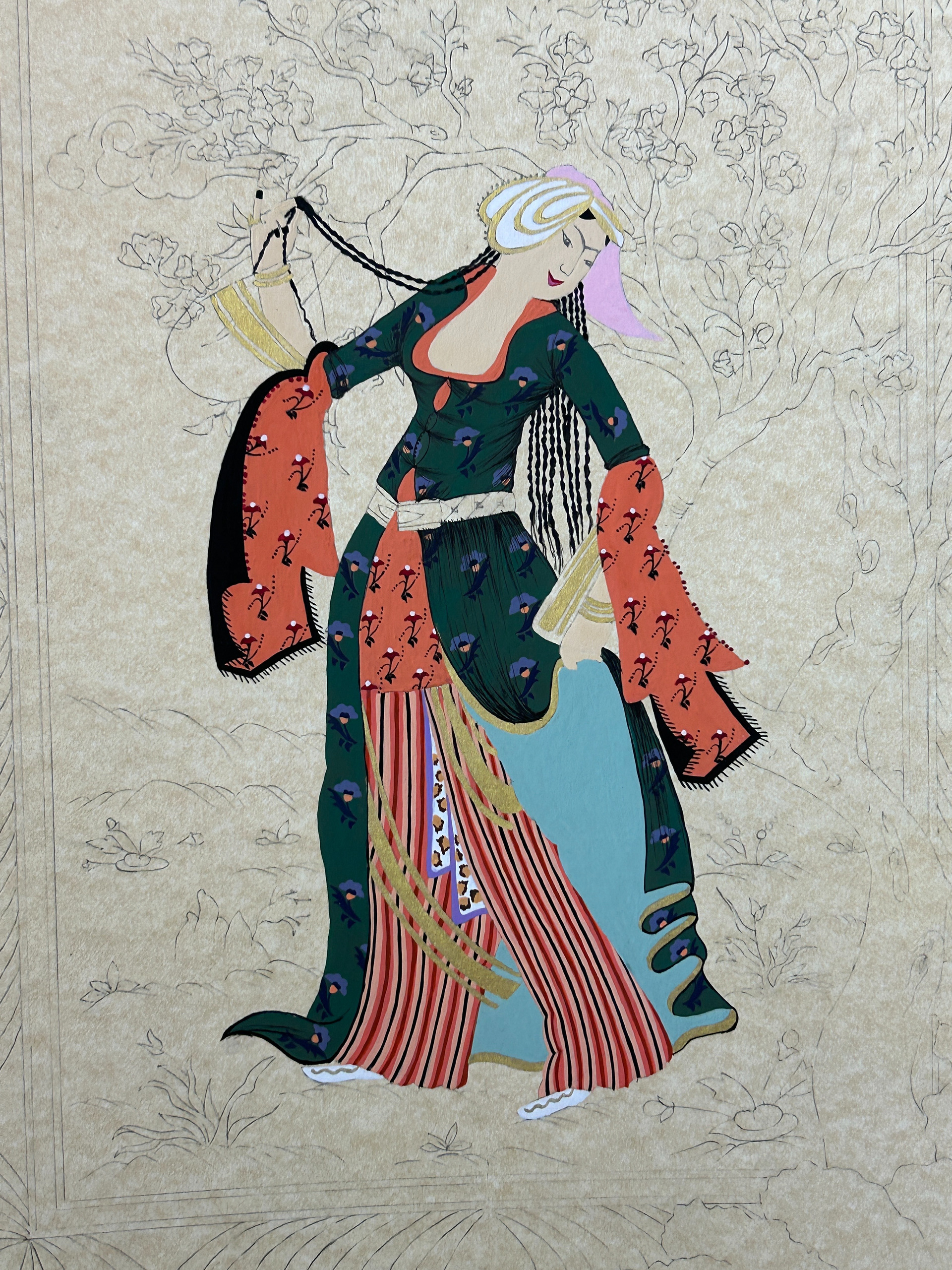
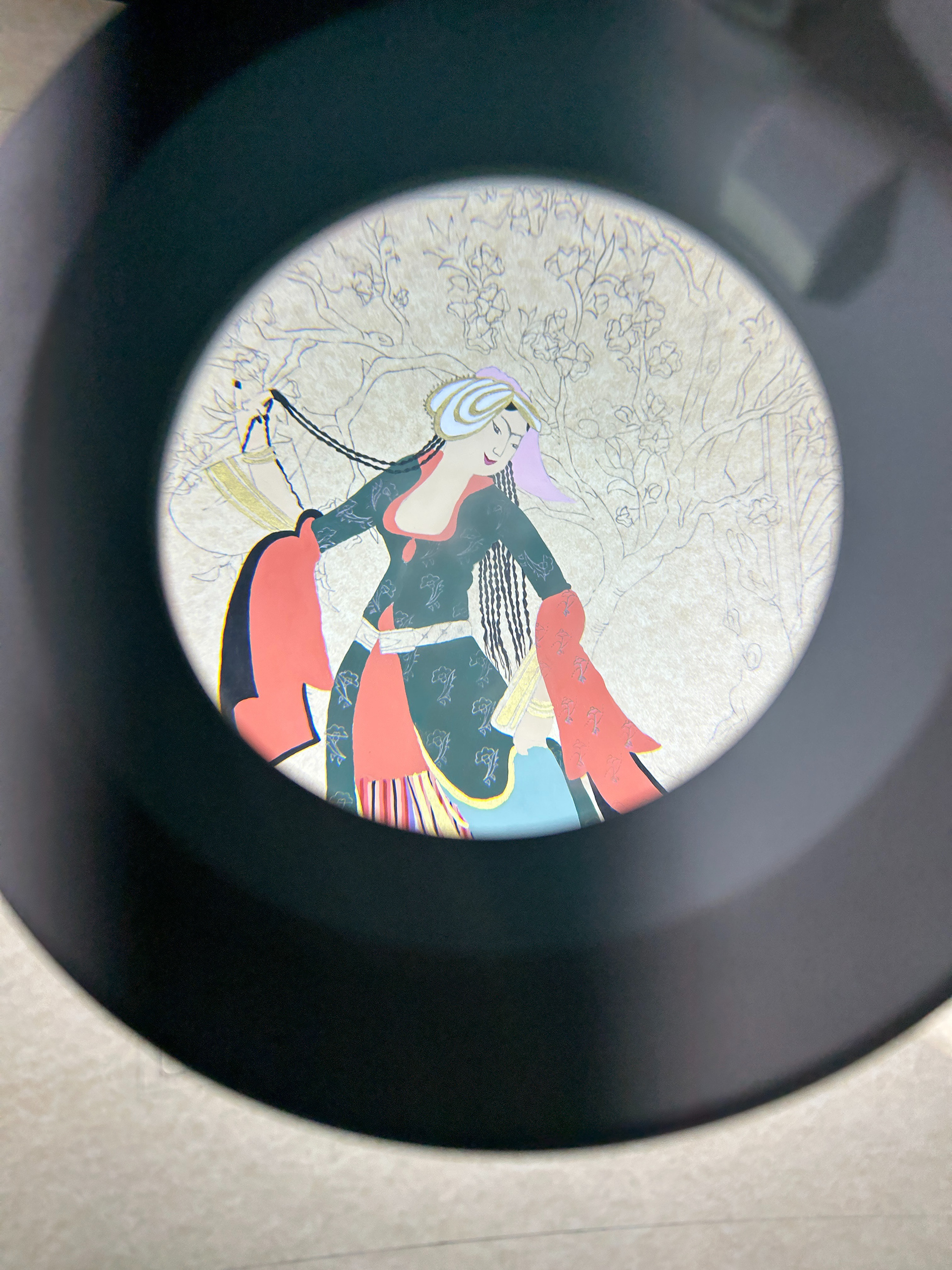



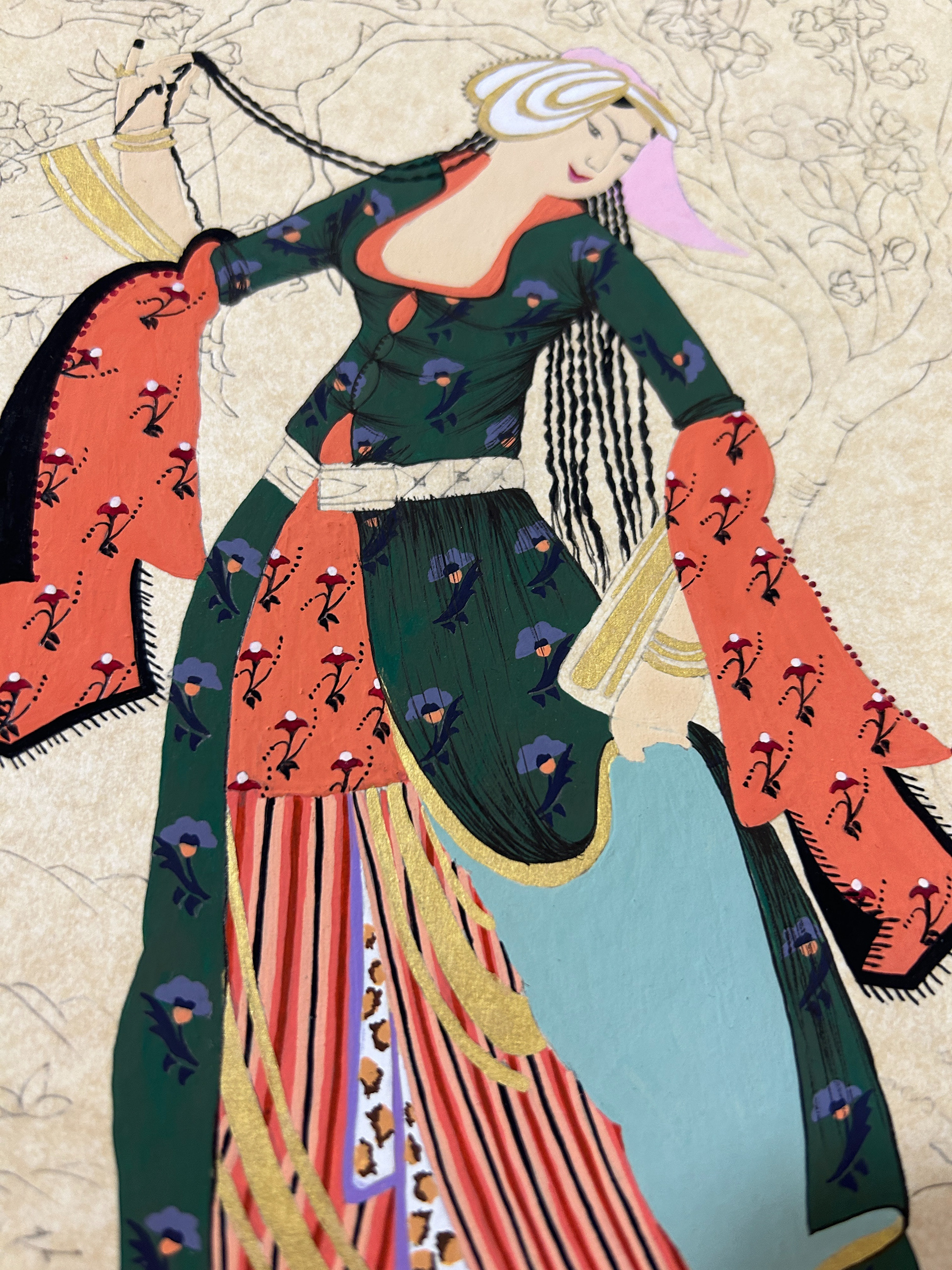



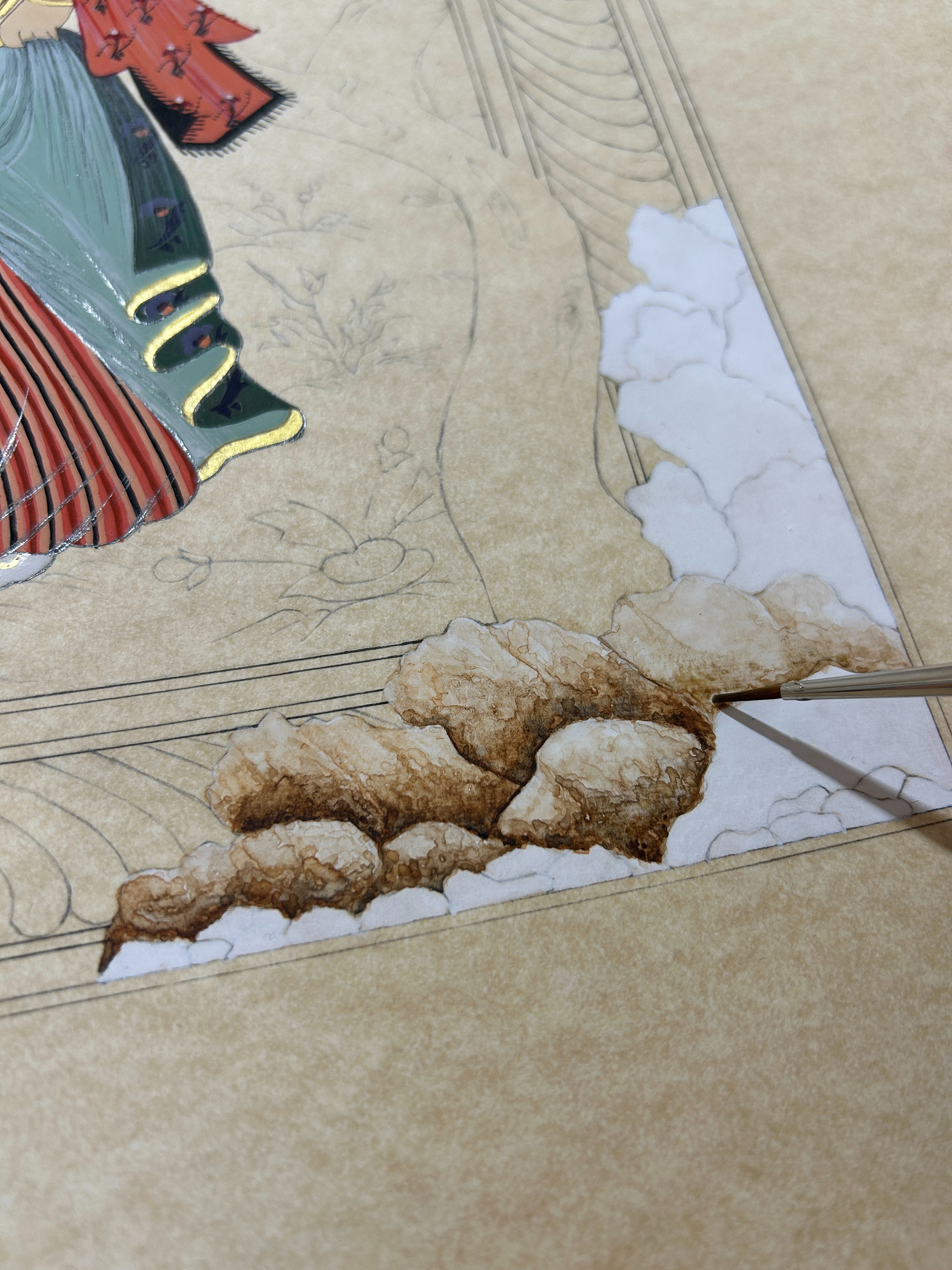
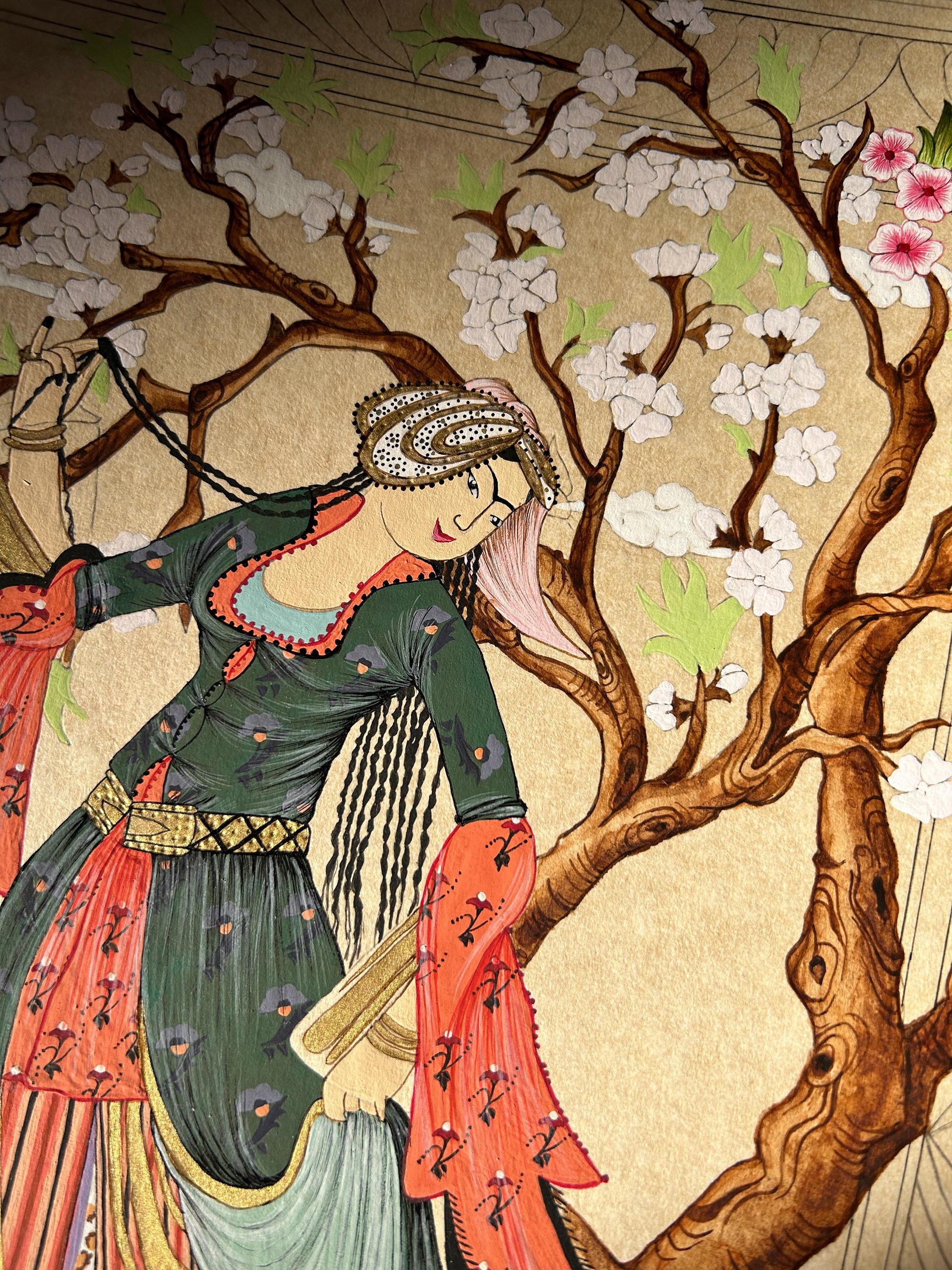
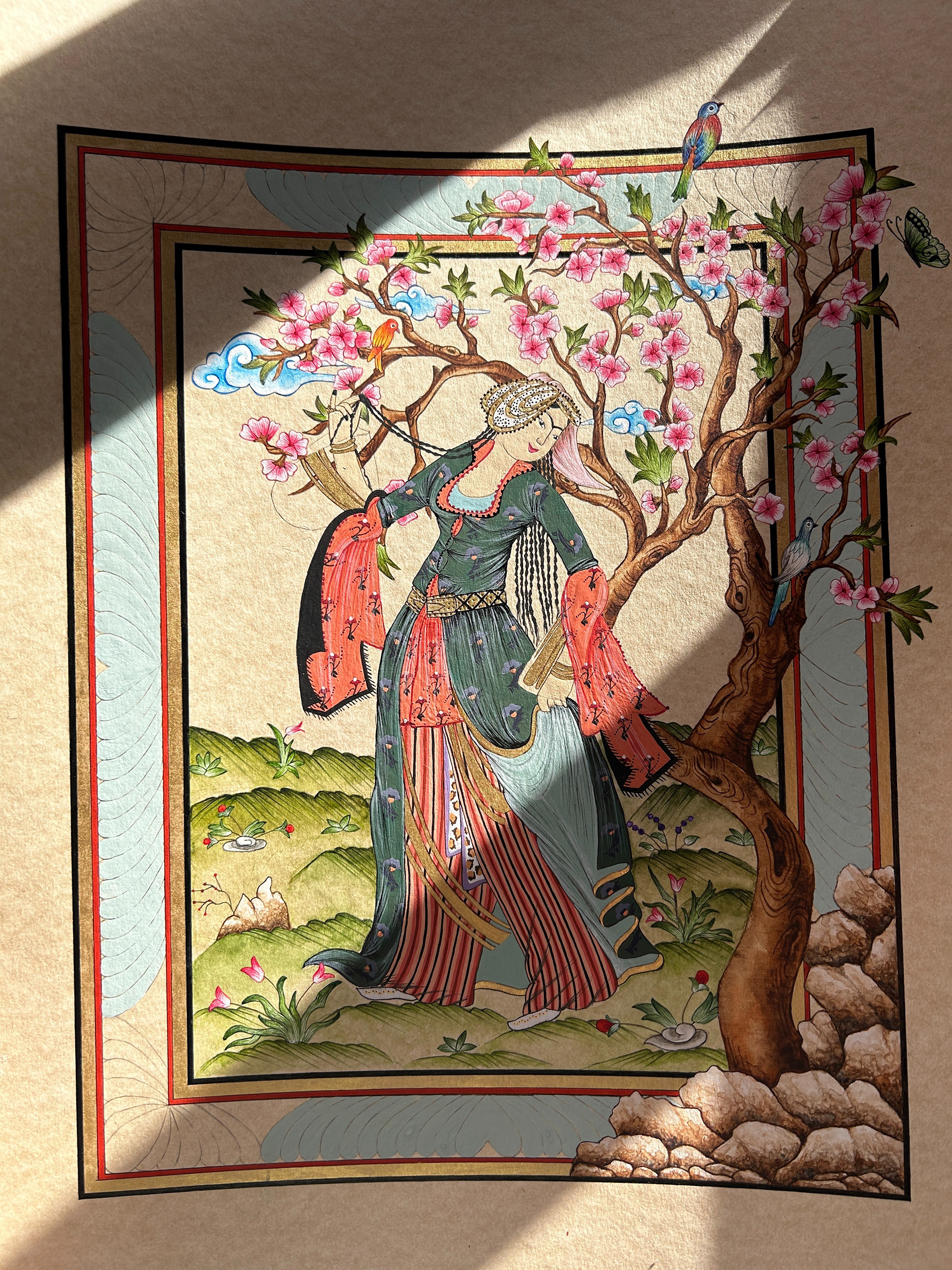
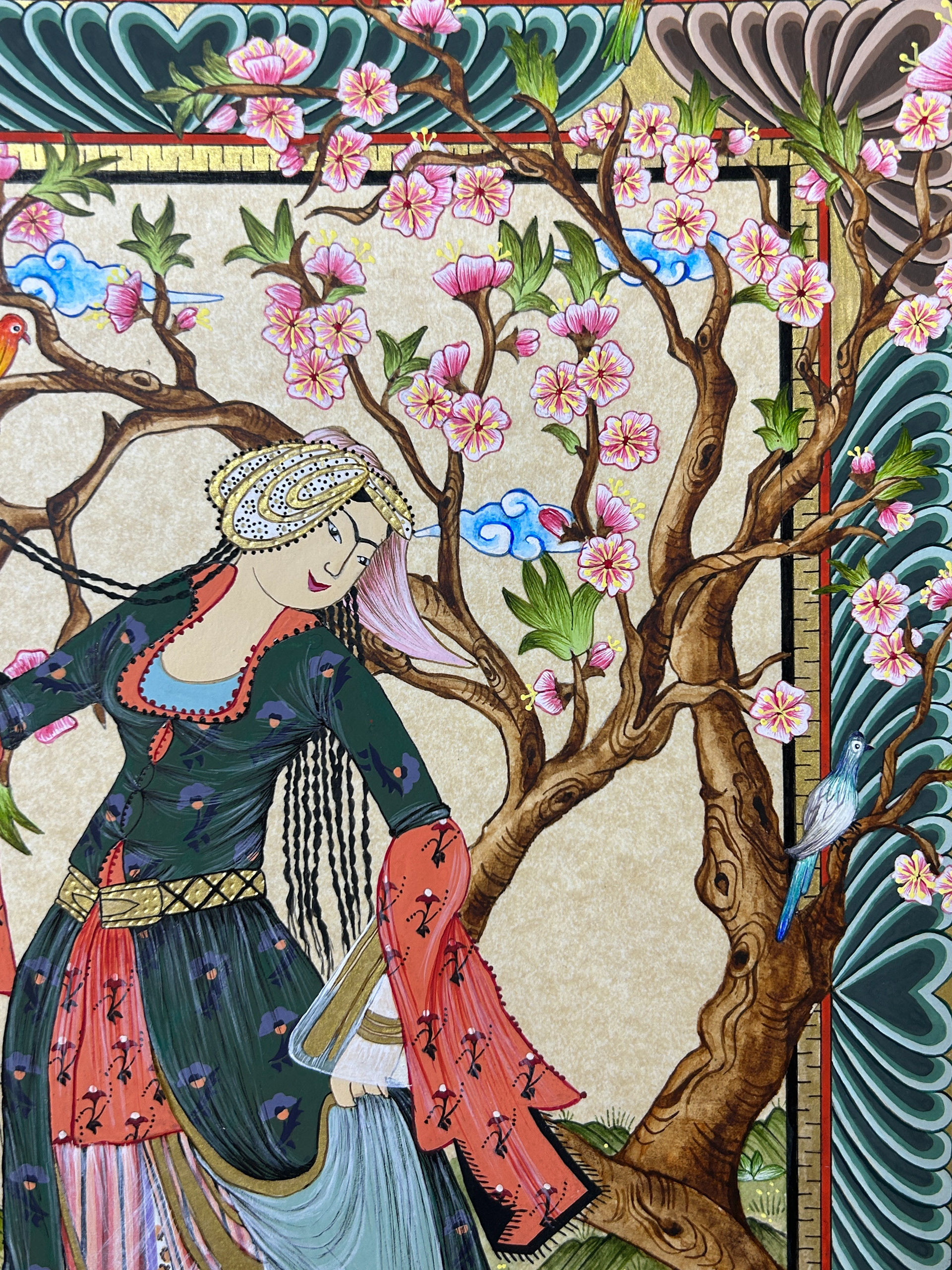
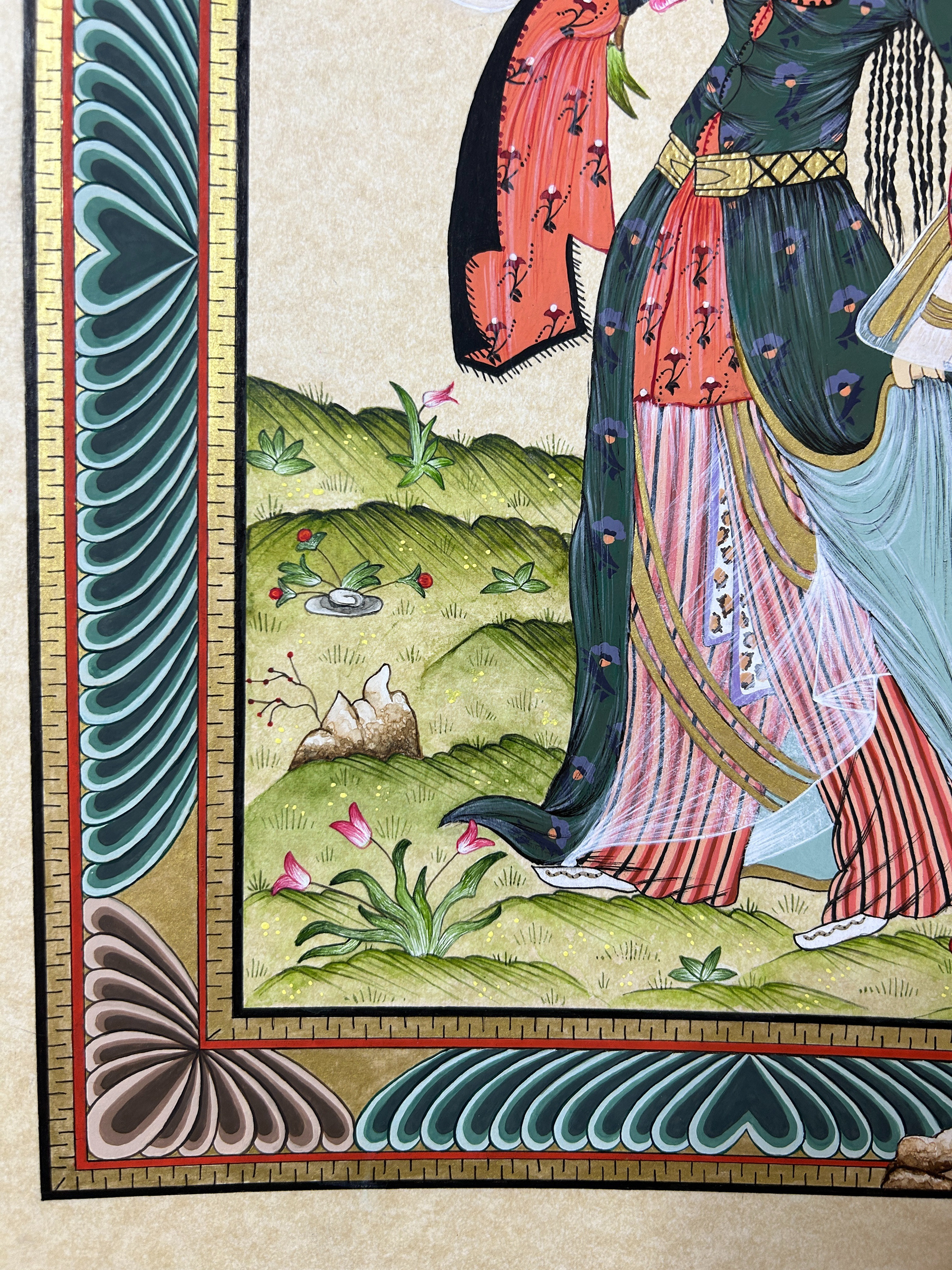
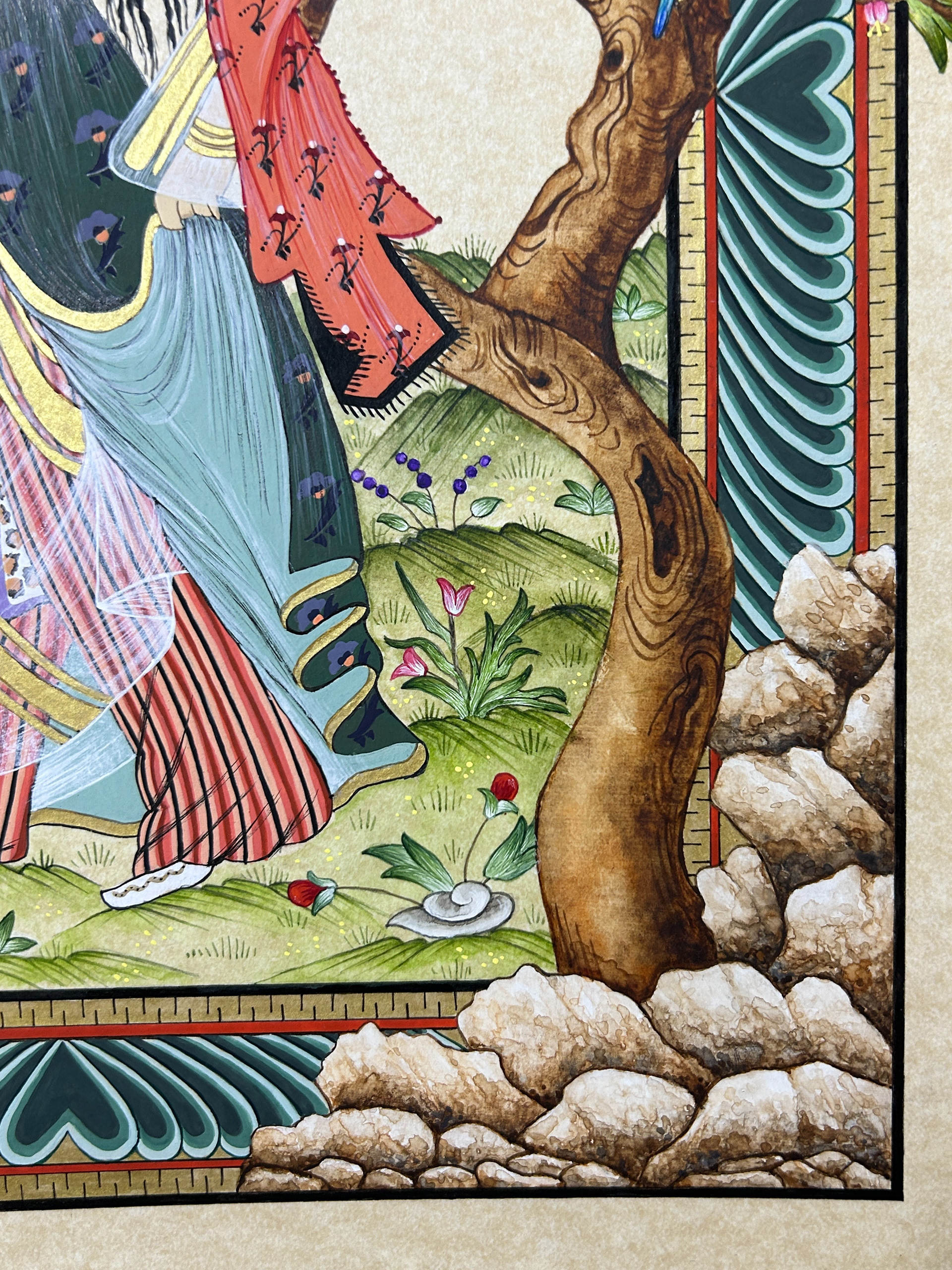
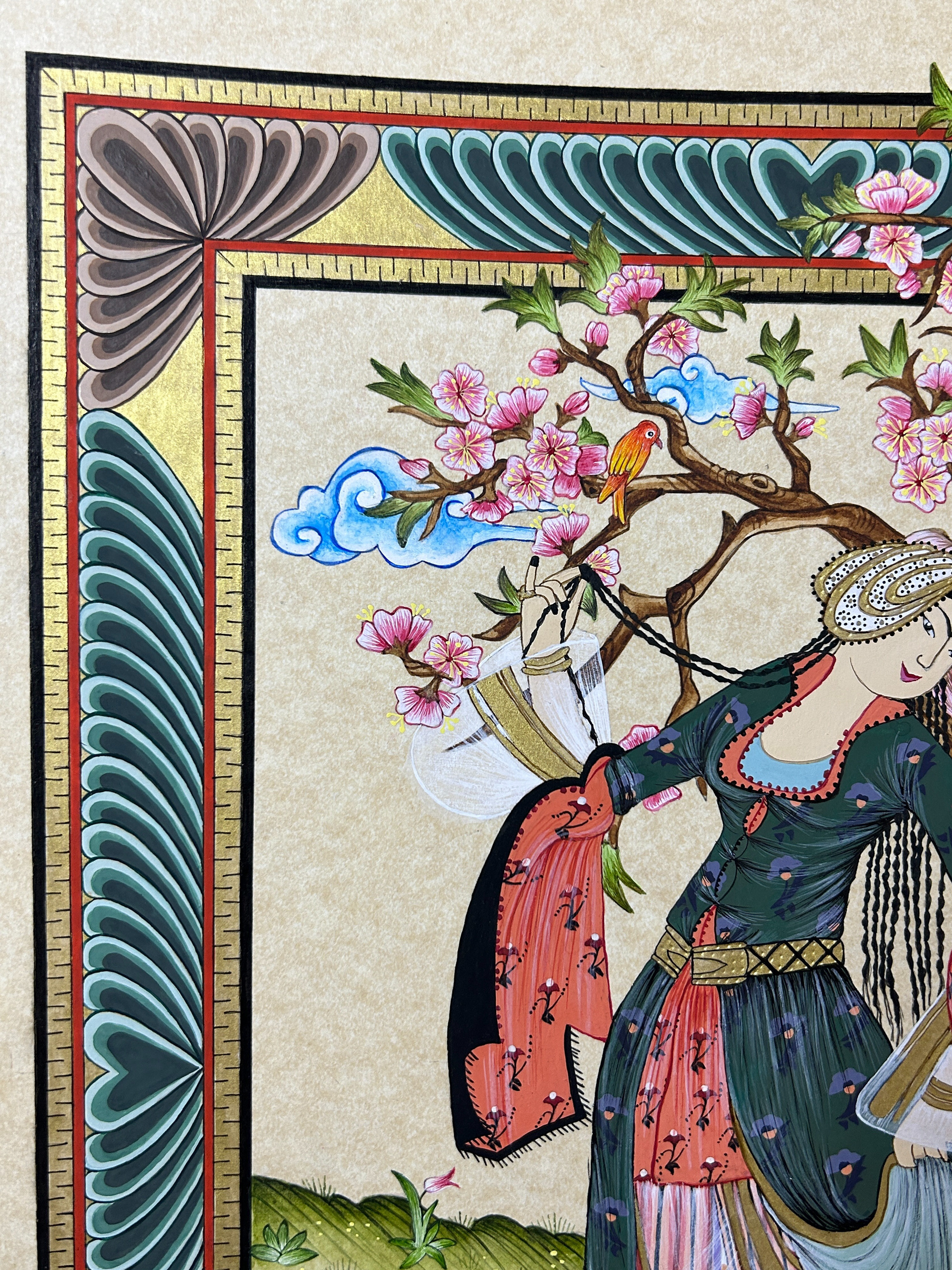
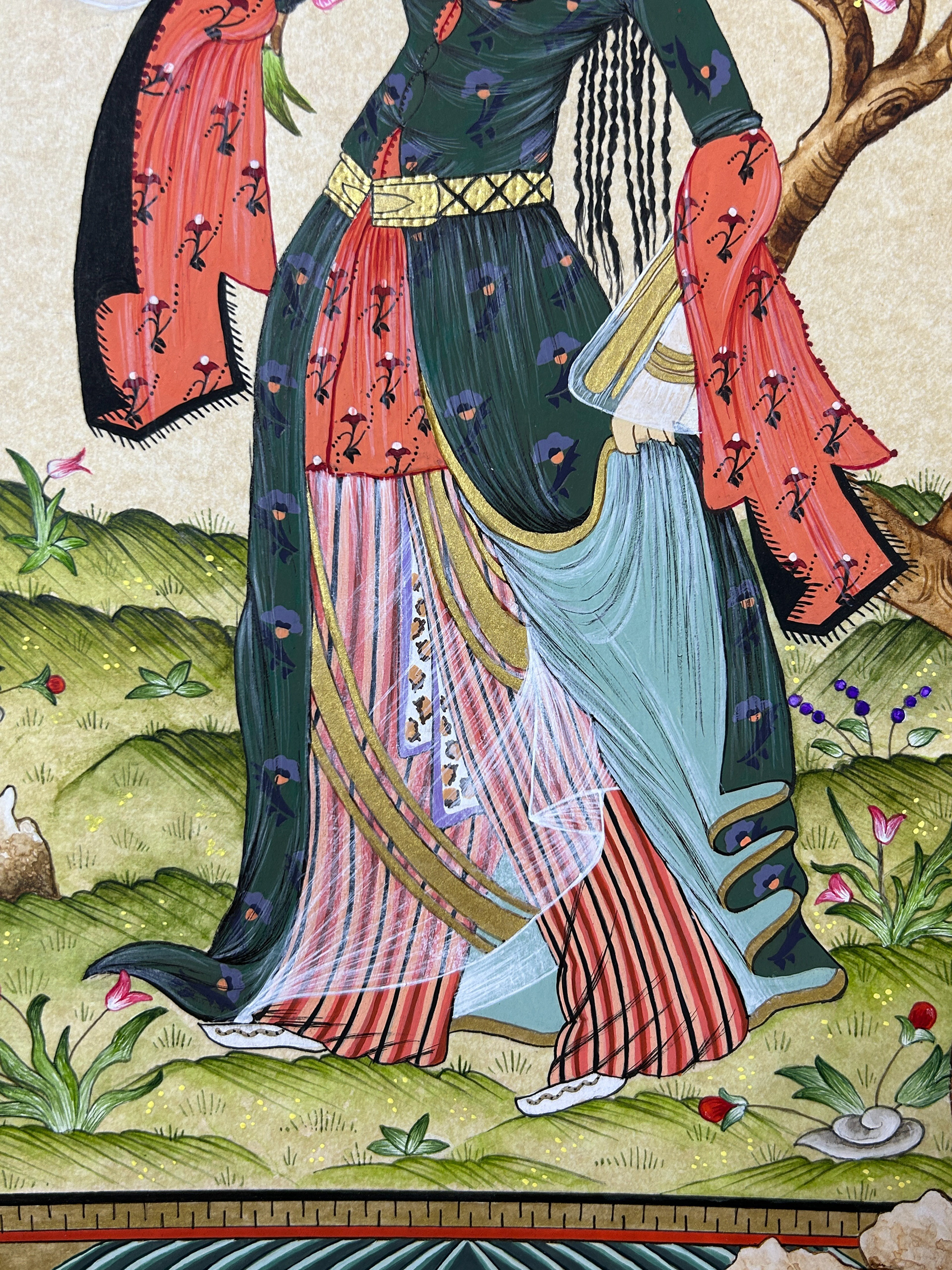
From Digital Conceptualization to Traditional Creation
I first conceptualize the artwork digitally on my iPad using Procreate, creating a sketch and adding colors. Once the digital concept is complete, I trace it onto passe-partout paper and apply traditional techniques while painting with a brush. Doing it digitally first allows me to position the objects, and while working on passe-partout, the physical touch inspires me with new ideas. It's a lengthy process but worth it in the end.
Digital Conceptualization: The artwork is initially conceptualized digitally on an iPad using Procreate. This digital creation involves sketching and adding colors to visualize the final piece.
Transferring to Passe-Partout Paper: Once the digital concept is complete, it is traced onto the passe-partout paper. This step allows me to transfer the digital design onto a physical medium.
Traditional Techniques: After transferring the outline, traditional techniques are applied. These applications involve using brushes and other tools to paint and enhance the design on the passe-partout paper.
Refinement: While painting on the passe-partout paper, I constantly refine and enhance the design. This involves making adjustments and improvements to the original digital concept, ensuring that the final artwork truly represents my vision.
Inspiration from Physical Touch: Working on the physical medium of passe-partout paper provides a tactile experience that can inspire new ideas and creative directions. Physically painting with a brush leads to new insights and creative choices.
Lengthy Process: The entire process can be lengthy, from digital conceptualization to painting on passe-partout paper. However, the time and effort invested are worthwhile in achieving the desired result.
DIGITAL VERSION
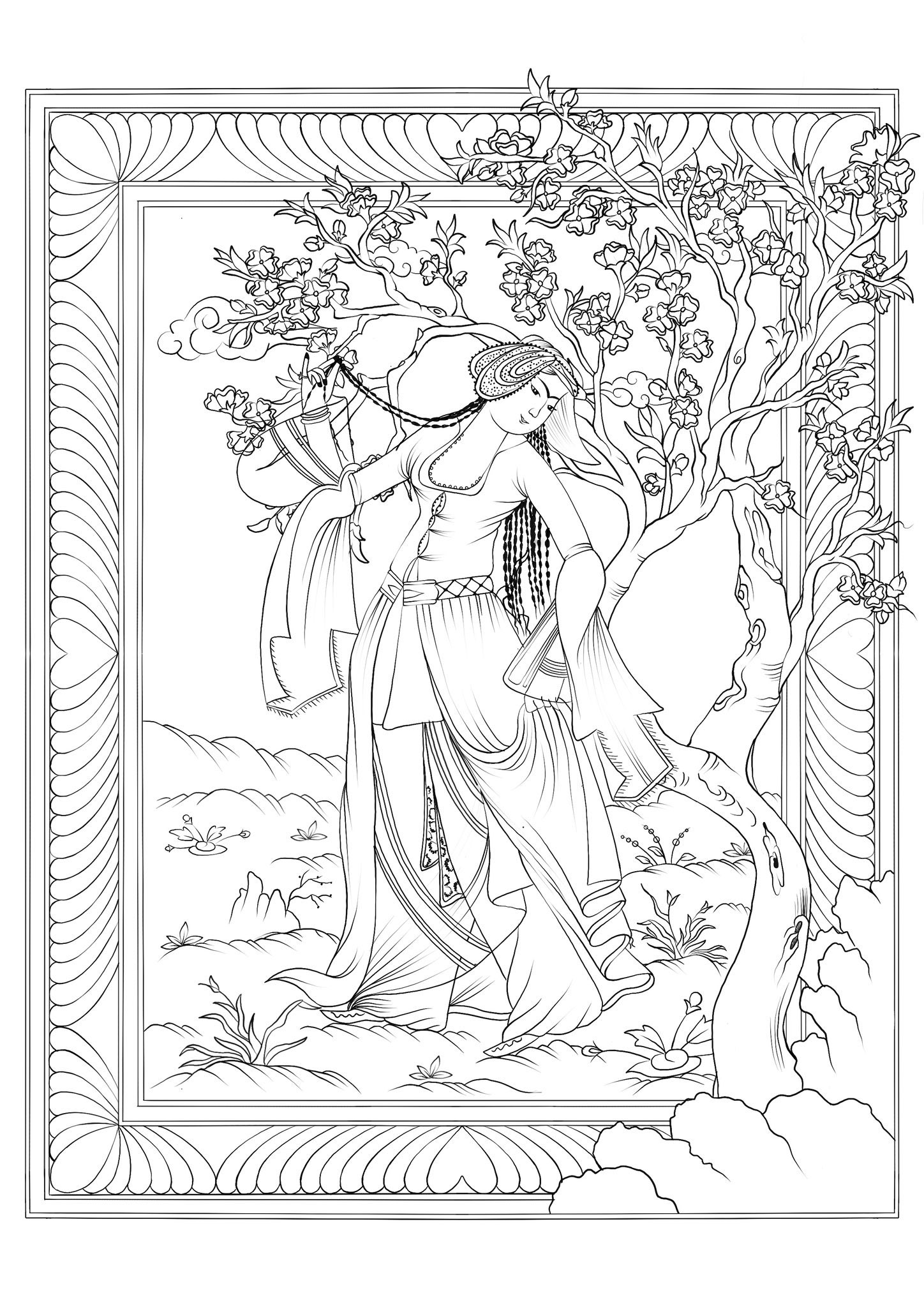
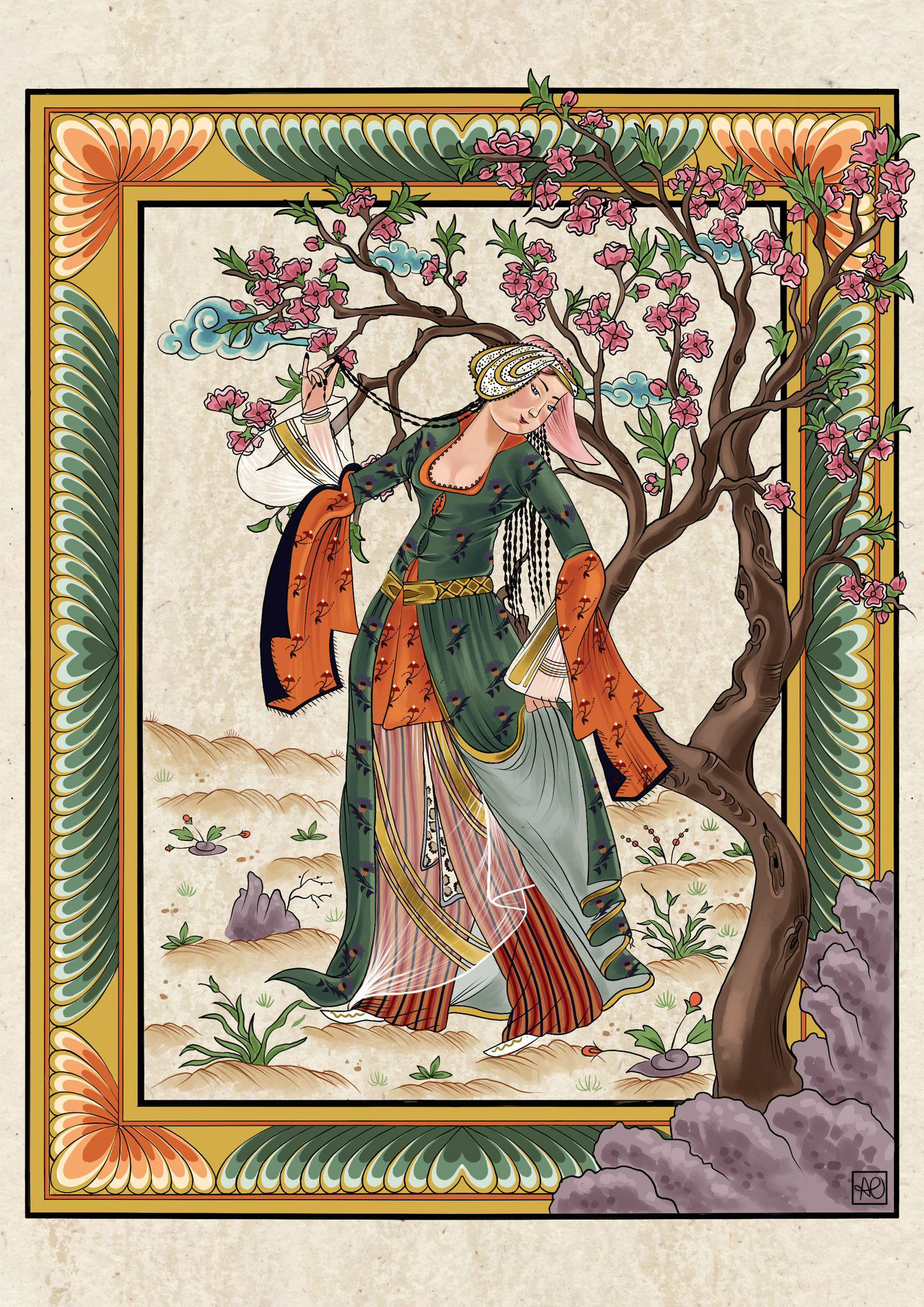
In this digital sketch, I used traditional Tezhip and miniature techniques. The piece features "Levni's Woman," a stylized figure clad in traditional Ottoman attire that reflects the fashion of the historical empire. I captured her in a graceful, modest pose, with her gaze demurely cast downwards. Her long dress, adorned with intricate patterns, consists of multiple layers and is cinched at the waist to highlight her silhouette. The long, loose sleeves are characteristic of the era's fashion.
Background: The background showcases pink blossoms, symbolizing spring and renewal. These contrast with her attire and infuse a natural element into the scene.
Border: The artwork's borders are decorated in Munhani style with traditional motifs, lending a formal, manuscript-like quality and infusing vibrant colors and decorative patterns that evoke Ottoman art and contribute to the historical ambiance.
Tulip Era: The piece also references the Ottoman Tulip Era, a vibrant and significant period in the 18th-century Ottoman Empire. It was highlighted by the poet Nedim and visually influenced by Levni, a key figure in the era's art.
Levni and Women: "Levni's Women" occupy a unique position in his work, offering a distinct portrayal compared to traditional Miniature Art. They are depicted with veiled faces and in their full feminine identity, engaging in various activities. Their features include clear skin and half-smiles, while deep slits and translucent fabrics in their clothing enhance their allure.
#ArtisticExpression #OttomanInspiration #DigitalArt #TulipEra
Incorporation of Real Gold
Did you know that gold leaf is utilized in the Art of Tezhip Illumination to adorn intricate designs? This centuries-old tradition not only adds a layer of symbolic significance but also enhances the visual impact, durability, contrast, and artistic versatility of the artwork. In illumination art, gold is valued for its symbolic depth and stunning visual effects. Its reflective properties elevate the aesthetic appeal of the artwork and create a striking contrast with other colors, emphasizing important details. Additionally, gold's lasting quality aids in the preservation of the art, while its adaptability in forms like leaf or paint allows for diverse artistic expressions.
HISTORY OF MINIATURE ART
Ottoman miniature painting was linked to the Persian miniature tradition and strong Chinese artistic influences. It was part of the Ottoman book arts, which also included illumination (tezhip), calligraphy (hat), marbling paper (ebru), and bookbinding (cilt). The terms "taser" or "rakish" were used to define the art of miniature paintings. The studios where artists worked were called "nakkashanes."
Signature of Levni
Miniatures, often unsigned, were a testament to the collaborative nature of miniature painting. The head painter, responsible for designing the scene's composition, worked with his apprentices. These apprentices, known as 'Tahrir, 'drew the contours with black or colored ink and then painted the miniature without creating an illusion of the third dimension. Interestingly, the head painter and, more often, the scribe of the text were named and depicted in some of the manuscripts, adding a personal touch to the collective effort. Normally, miniature paintings do not aim to depict human beings and other living or non-living entities realistically.


